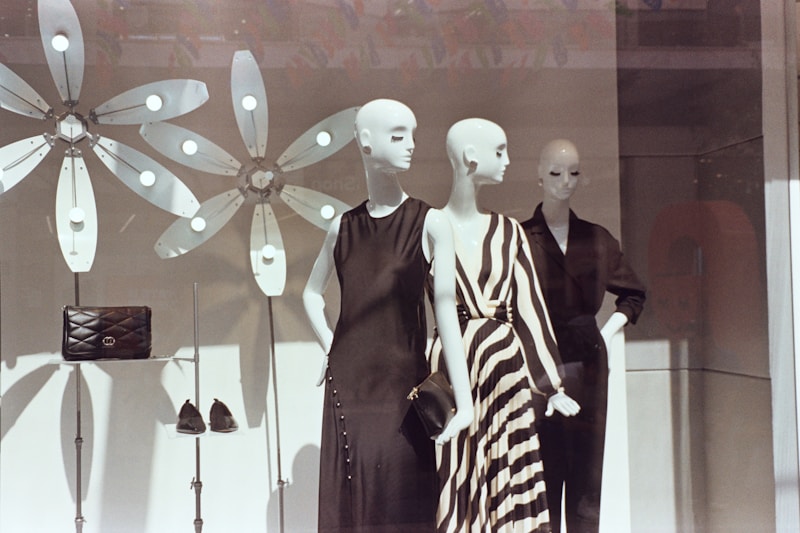Balancing Designer Creativity and Inventory Needs: A Comprehensive Guide
Balancing Designer Creativity and Inventory Needs: A Comprehensive Guide
Introduction
In the ever-evolving world of fashion and interior design, the ability to balance designer creativity with inventory needs is crucial. This balancing act is not just a challenge; it is an essential skill that can determine the success of a brand. From emerging designers to established labels, finding a harmonious relationship between artistic expression and practical inventory management is key. This article will delve into the intricacies of this challenge, offering insights, strategies, and best practices.
The Importance of Balancing Creativity and Inventory
Designers thrive on creativity; it is the core of their identity and their work. However, when this creative vision meets the realities of inventory management, conflicts can arise. The following points illustrate why this balance is vital:
- Consumer Demand: Understanding what customers want while staying true to the designer's vision can lead to enhanced sales and customer satisfaction.
- Cost-Effectiveness: Efficient inventory management can reduce costs, allowing designers to invest more in creativity.
- Market Trends: Staying relevant in the market requires designers to adapt their creativity based on inventory capabilities.
Strategies for Achieving Balance
Here are some effective strategies designers can implement to harmonize their creative processes with their inventory requirements:
1. Conduct Market Research
Before embarking on a new design project, understanding market trends through research is essential. Surveys, focus groups, and social media analytics can provide insight into consumer preferences. This information allows designers to create products that resonate with market demands.
2. Collaborate with Inventory Managers
Open lines of communication with inventory and supply chain managers can help designers understand what materials are available and the costs associated with them. Regular meetings can facilitate a dialogue that supports both the creative and logistical sides of the business.
3. Implement Just-In-Time Inventory
This strategy minimizes excess inventory by ordering materials only as they are needed for production. It allows designers to be more creative with fewer constraints, as they can adjust their designs based on real-time feedback and material availability.
4. Utilize Technology and Software
Modern inventory management software can streamline the process and provide insights that help designers make informed decisions. Programs that forecast demand and track inventory can reduce waste and enhance creativity by allowing designers to focus more on their craft rather than logistics.
Table of Creative vs. Inventory Balancing Techniques
| Technique | Benefits | Challenges |
| Market Research | Understanding consumer needs | Time-consuming |
| Collaboration with Inventory Managers | Integrated approach | Requires cooperation |
| Just-In-Time Inventory | Reduces excess stock | Potential production delays |
| Using Inventory Management Software | Efficiency and insights | Requires initial investment |
Common Challenges in Balancing Creativity and Inventory
Even the best-laid plans can encounter obstacles. Here are some common challenges faced by designers:
1. Overproduction vs. Underproduction
Producing too much can lead to a significant financial drain, while creating too little may lead to missed sales opportunities. Striking the right balance is critical.
2. Supply Chain Disruptions
Unforeseen disruptions in the supply chain can halt production schedules and force designers to compromise their creative vision, leading to frustration and reduced motivation.
3. Pressure from Stakeholders
Designers often face pressure from stakeholders to deliver commercially viable products. Balancing artistic vision with business expectations can be stressful.
Innovative Solutions for Modern Designers
The fashion industry is rife with innovation. Here are some creative solutions that have surfaced recently:
1. Crowdsourced Design
Engaging potential customers in the design process can yield invaluable feedback and create a sense of community. This method can help ensure inventory meets consumer desires while enhancing creativity.
2. Sustainable Practices
Today’s consumers are more conscious than ever about sustainability. Designing within sustainable frameworks can align creativity with responsible inventory management. This not only enhances brand reputation but also attracts a loyal customer base.
Future Trends to Watch
As designers move forward, several trends are likely to affect the balance between creativity and inventory:
- Augmented Reality (AR): Enabling consumers to visualize products can help designers gauge interest before production.
- Artificial Intelligence (AI): AI can predict trends and consumer behavior more accurately, allowing designers to align their creativity with market demands.
- Virtual and Hybrid Fashion Shows: These events broaden access and engagement, impacting how designers showcase their creativity and manage inventory.
Conclusion
Balancing designer creativity with inventory needs is a challenging yet rewarding endeavor. By leveraging insights, collaborating with key stakeholders, and embracing innovative practices, designers can find a harmonious way to merge artistic expression with practical inventory management. As the industry evolves, staying agile and informed will be essential for future success. Remember, the ultimate goal is to create value for consumers while also fostering your unique creative voice. Whether you are a fledgling designer or an established brand, maintaining this balance is key to thriving in a competitive marketplace.
Takeaway Tips:
- Stay informed about market trends through continuous research.
- Foster strong communication with inventory and supply chain teams.
- Embrace technology to streamline processes and improve insights.
- Be adaptive and open to feedback from customers to refine designs.
By mastering the balance of creativity and inventory management, designers can pave their way to success in the dynamic world of fashion and design.

